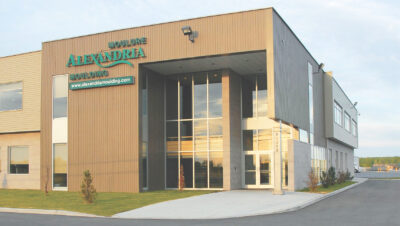As the industry moves into early fall, businesses are still facing many challenges to reach a profit. The housing shortage on both sides of the border, lower demand for hardwood lumber and finished goods at a low, the loss of market share due to other materials and imported goods and other species native to those importing countries continue to push businesses to be innovative. Also, the consumer trend towards painted finishes in the moulding, millwork, cabinet and blinds sectors has made it a more competitive market, as well as the production of engineered wood and non-wood raw materials instead of hardwoods. With the softwood lumber tariffs being raised recently, Canadian businesses will be faced with even more challenges to export their products to the U.S., which may add additional strain to the U.S. housing shortage and increase building costs for those building a home.
With the decimation of Ash trees caused by the Emerald Ash Borer, some contacts noted the lack of Ash availability to source logs, and therefore some sawmills have avoided this species. However, demand is steady for the volume produced with prices remaining steady.
Aspen demand is reported as limited but ongoing due to the supplied, developing production. Prices are reported as weak for green stocks. Inventories of kiln-dried Aspen are high relative to buyers’ needs, commented contacts and thus prices edged down.
Basswood is also noted as being a slow seller at this time due to the decline in secondary manufacturing and the competition from other species and non-wood materials. Thus, sawmills have reduced its production, but supplies are sufficient to meet market needs. Even though production is low, contacts stated that green inventories are elevated. Prices are trending down for several grades and thicknesses.
Supply of Beech is exceeding demand. Sales of Birch, on the other hand, are based on grades and color. Selling the No. 1 Common and No. 2A grades are more challenging at this time.
Hard Maple continued to be a strong seller over the summer and into early fall compared to other species. With production low for all hardwoods, Hard Maple supplies are not extremely high, but have quite an even balance between supply and demand for the common grades, with supplies of FAS and Select tight. Contacts noted that markets of kiln-dried stocks fared better earlier in the year than they are doing now. It is common to experience a slowdown during the summer, but some feel it is something more than a summer occurrence at this time.
Sawmills producing Soft Maple are shipping out total production. Contacts noted that prices for FAS and Select were rising, while prices were softening for the common grades.
Red Oak sales are reported to be doing well on domestic and international markets, with prices firm. Sales of kiln-dried No. 1 Common and No. 2A are good with stable prices. Demand for green FAS and Select is faring better than the common grades. With limited supplies and steady demand, White Oak sales are doing well. Secondary manufacturers and wholesalers are buying consistent quantities of No. 1 Common and Better grades. However, flooring manufacturers are not purchasing large quantities as their inventories are ample at this time.
The Consumer Price Index rose at an annual rate of 2.5 percent in July (the most recent data available at press time), down from 2.7 percent in June, said Statistics Canada in mid-August. Prices for travel tours, passenger vehicles and electricity helped drive the headline figure lower. However, shelter costs are still the main driver of inflation as Canadians face significantly higher rents and mortgage payments. This matched economists’ forecasts and solidified expectations for a third consecutive interest rate cut.
However, shelter price growth slowed in July to 5.7 percent year-over-year, down from 6.2 percent in June. Inflation remained below 3 percent since January and fears of inflation reaccelerating have diminished as the economy has weakened.
Improvement in global supply chains and the effect of high interest rates have helped cool price growth across the Canadian economy. Grocery prices are rising, but at a more modest pace. In July, grocery prices were up 2.1 percent from a year ago. Prices for many goods, such as clothing and footwear, have fallen compared to a year ago.
The housing market has remained relatively muted, despite fears earlier this year that interest rate cuts could spur a flurry of activity.
However, some price pressures persist, particularly in services-producing sectors. Prices for services were up 4.4 percent from a year ago, a trend that economists say reflects high wage growth. Nevertheless, with the backdrop of slowing price growth overall, forecasters are widely expecting the Bank of Canada to continue cutting interest rates at back-to-back meetings.
Governor Tiff Macklem signaled that the central bank is increasingly concerned about the risk of keeping interest rates too high for too long. The Bank of Canada has been paying closer attention to the slowdown in the labor market as it adjusts monetary policy. Labor shortages have decreased significantly and the unemployment rate has risen steadily, reaching 6.4 percent in July.
At the time of this writing, the Bank’s key interest rate now stands at 4.5 percent.








